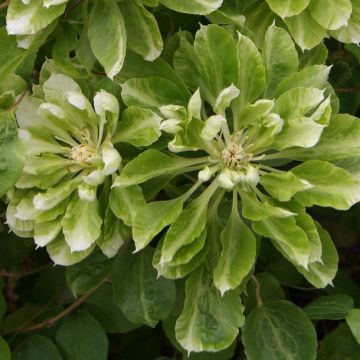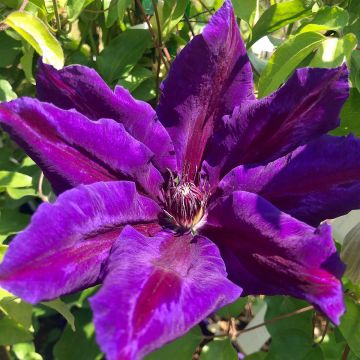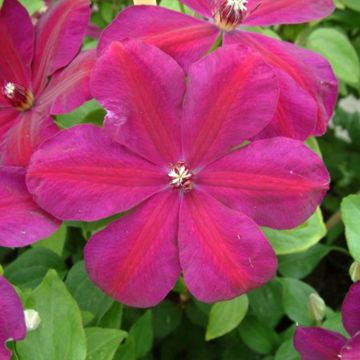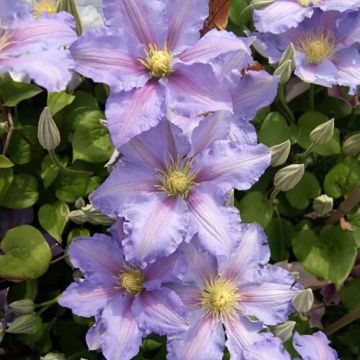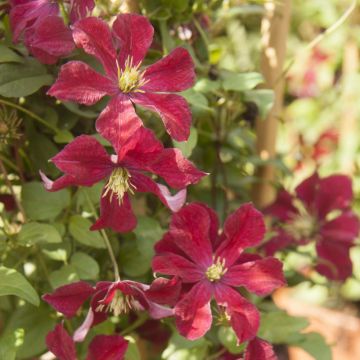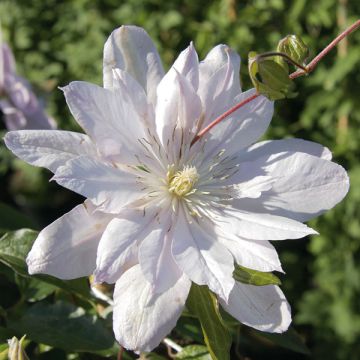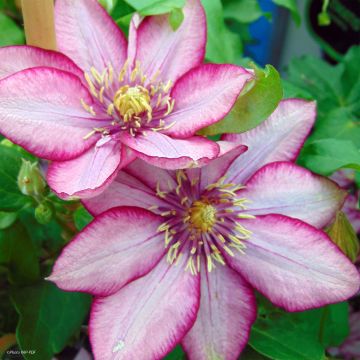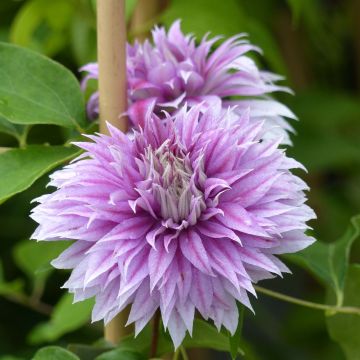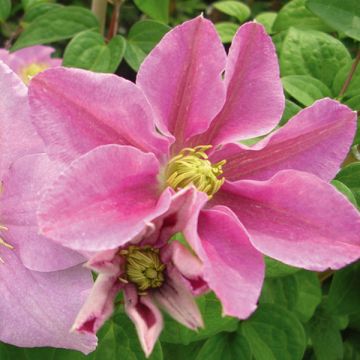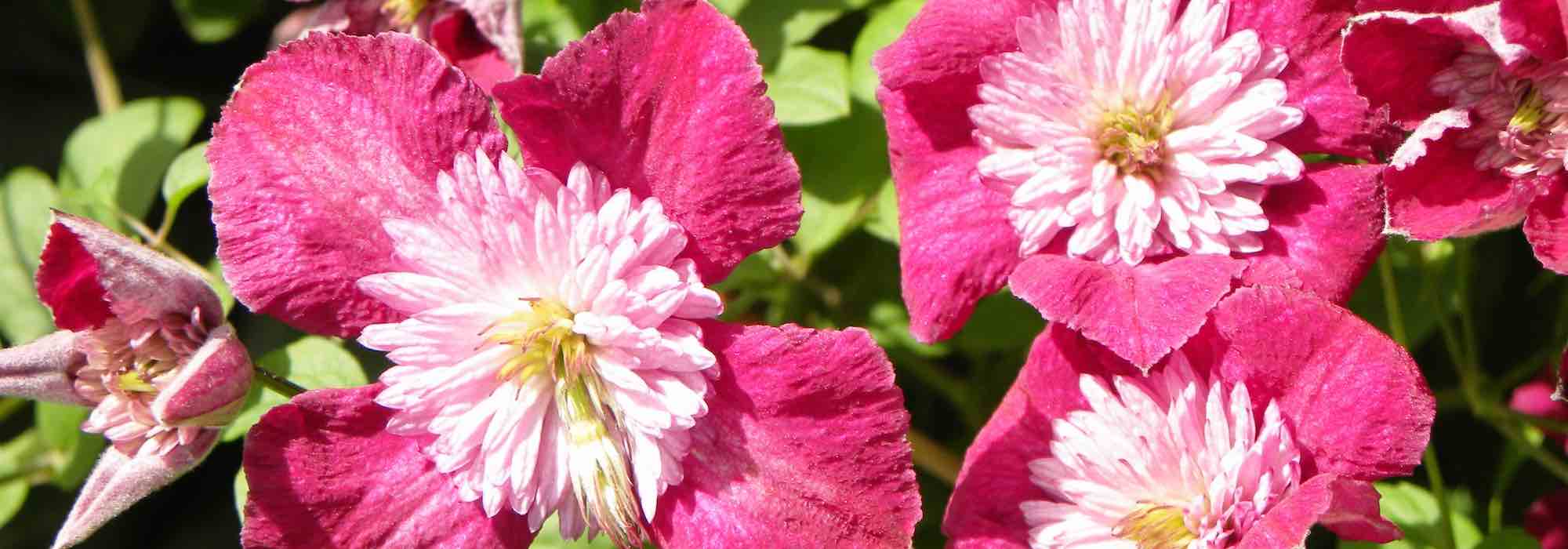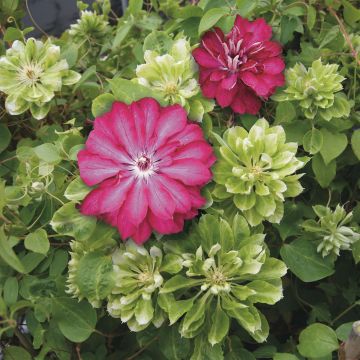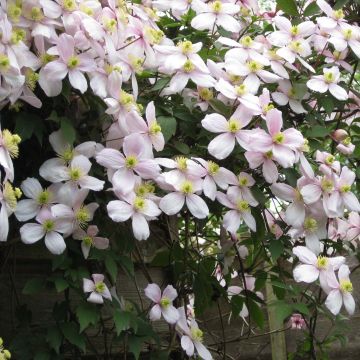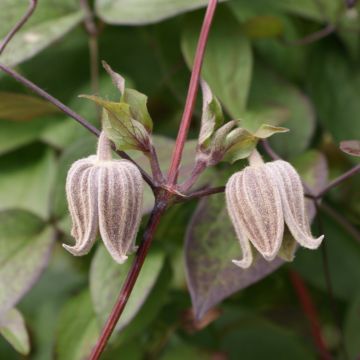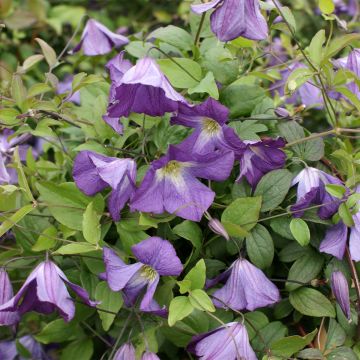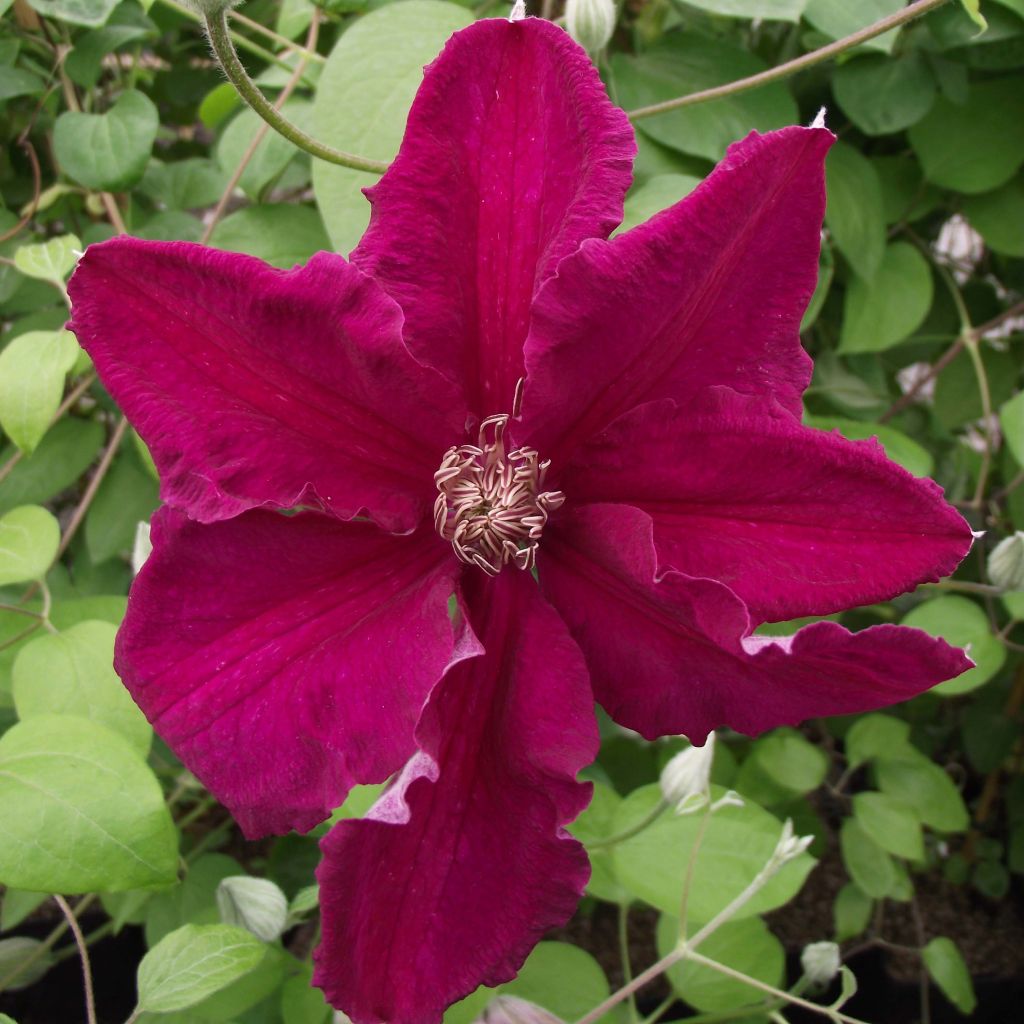

Clematis viticella Ernest Marckham
View more pictures
Hide images
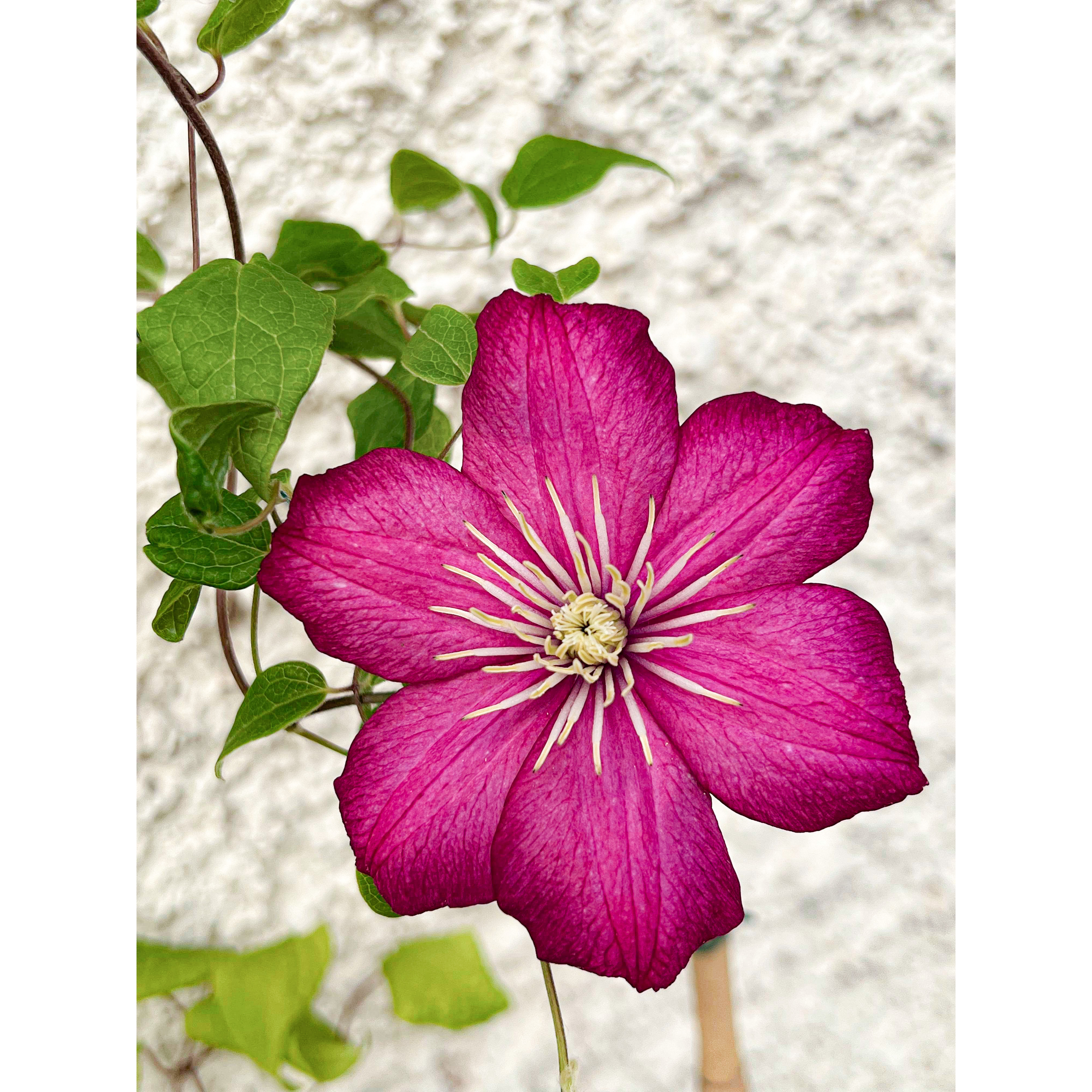
Elodie L.

Flowering June 2022
Elodie L. • 51 FR
Clematis viticella Ernest Marckham
Clematis viticella Ernest Marckham
Delivered very well in very good conditions. Took well to being potted first and then planted in the ground. A bit weak during its first season in the garden, but I believe it will strengthen next spring.
Roxane, 07/11/2022
Special offer!
Receive a €20 voucher for any order over €90 (excluding delivery costs, credit notes, and plastic-free options)!
1- Add your favorite plants to your cart.
2- Once you have reached €90, confirm your order (you can even choose the delivery date!).
3- As soon as your order is shipped, you will receive an email containing your voucher code, valid for 3 months (90 days).
Your voucher is unique and can only be used once, for any order with a minimum value of €20, excluding delivery costs.
Can be combined with other current offers, non-divisible and non-refundable.
Home or relay delivery (depending on size and destination)
Schedule delivery date,
and select date in basket
This plant carries a 6 months recovery warranty
More information
We guarantee the quality of our plants for a full growing cycle, and will replace at our expense any plant that fails to recover under normal climatic and planting conditions.

Would this plant suit my garden?
Set up your Plantfit profile →
Description
Clematis 'Ernest Markham' is a climbing perennial that boasts a long and generous flowering. Its large star-shaped flowers in enchanting shades cover the foliage almost throughout summer. Their velvety purple shade oscillates between deep pink or red, and enhances a small light heart with pale-yellow reflections. This vigorous plant climbs on tall supports such as arches, pergolas, and fences.
This cultivar, dating back to the early 20th century, comes from England. Its name was given in tribute to the gardener of a manor in Sussex. It belongs to the Ranunculaceae family. Like most of its cousins, it prefers light, deep, moist, and fertile soil that is preferably neutral. It appreciates a sunny or partially shaded position, with the base always in the shade. It is hardy and withstands cold weather. It is not afraid of frost, even if it is severe. However, it does not like stagnant moisture, so the substrate must be well-draining and watering should be moderate (if necessary, especially in the first year).
This beautiful climber can sometimes extend up to 4m (13ft) in length. It bears large, single flowers measuring approximately 10cm (4in) in diameter. They bloom from July to August. The flowers are made up of six ovate tepals, ending in a point, with a slightly undulate margin. They open fully in a star shape, revealing a cream stamen heart with brownish anthers. Their subtle colour wavers between pink and red for a long time and often ends up compromising in purple, with violet nuances. This combination is changeable depending on the exposure: it fades in sunlight and intensifies in shade. Fruits appear after the flowers, which will decorate the foliage until winter. The deciduous leaves are composed of 3 to 5 leaflets. They are a stunning bright green, providing a beautiful background for the flowers. They are carried by voluble stems that twine around their support.
Clematis 'Ernest Markham' brings strength and vibrancy to compositions based on pink or red. It will elegantly dress up a slightly neglected wall in a partially sunny position, in the company of its cousins from the same genus. Choose light shades, such as C. 'Parasol', C. 'Andromeda', or C. 'Hanagurama' to enhance the overall look. Alternatively, place the perennial Geranium phaeum 'Mourning Window' and Heuchera 'Plum Pudding' at its base to stay in the same tone.
Clematis viticella Ernest Marckham in pictures
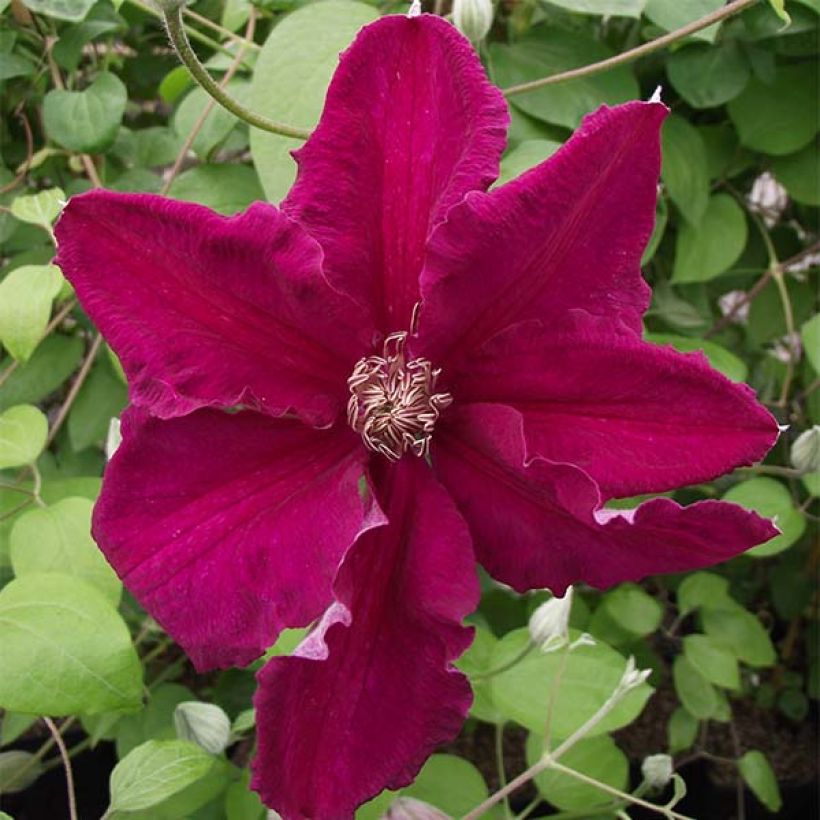

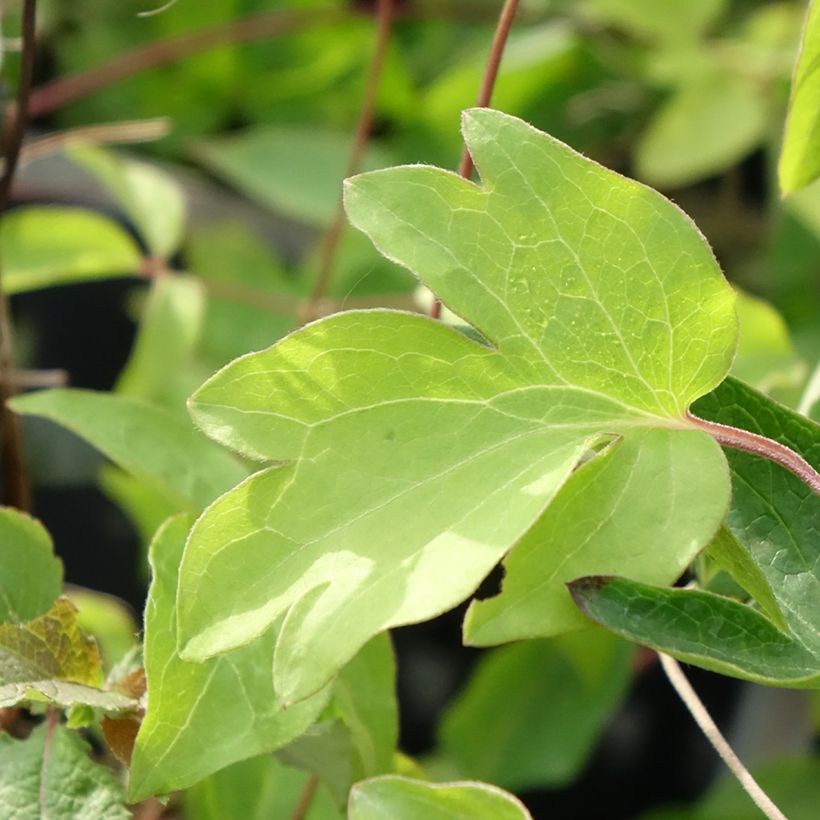

Plant habit
Flowering
Foliage
Botanical data
Clematis
viticella
Ernest Marckham
Ranunculaceae
Cultivar or hybrid
Other Clematis Patens
View all →Planting and care
Plant in spring or autumn at a depth of 5cm (2in), with the root ball placed diagonally on the ground. Keep its head in the sun (or partial shade) and the roots in the shade. You can place a flat tile in front of the stump or use ground cover plants to create the required shade. It appreciates rather moist but not waterlogged, deep, well-worked, and rich soils. A sunny exposure will promote its flowering, with lighter shades. In partial shade, its colours will be more intense. Cover the base with a small mound of soil to encourage the emergence of new shoots. After planting, cut back the stems to 30cm (12in) from the base, above a pair of buds.
Train them loosely to help the plant cling on its own later on.
Pruning should be done in spring before the vegetation resumes. Cut back the stems that flowered the previous year. Always cut below a pair of buds, about 30 to 40cm (12 to 16in) from the ground (higher if the subject is older).
Watch out for pests such as aphids, slugs, and snails.
Planting period
Intended location
Care
Planting & care advice
-
, onOrder confirmed
Reply from on Promesse de fleurs
Similar products
Haven't found what you were looking for?
Hardiness is the lowest winter temperature a plant can endure without suffering serious damage or even dying. However, hardiness is affected by location (a sheltered area, such as a patio), protection (winter cover) and soil type (hardiness is improved by well-drained soil).

Photo Sharing Terms & Conditions
In order to encourage gardeners to interact and share their experiences, Promesse de fleurs offers various media enabling content to be uploaded onto its Site - in particular via the ‘Photo sharing’ module.
The User agrees to refrain from:
- Posting any content that is illegal, prejudicial, insulting, racist, inciteful to hatred, revisionist, contrary to public decency, that infringes on privacy or on the privacy rights of third parties, in particular the publicity rights of persons and goods, intellectual property rights, or the right to privacy.
- Submitting content on behalf of a third party;
- Impersonate the identity of a third party and/or publish any personal information about a third party;
In general, the User undertakes to refrain from any unethical behaviour.
All Content (in particular text, comments, files, images, photos, videos, creative works, etc.), which may be subject to property or intellectual property rights, image or other private rights, shall remain the property of the User, subject to the limited rights granted by the terms of the licence granted by Promesse de fleurs as stated below. Users are at liberty to publish or not to publish such Content on the Site, notably via the ‘Photo Sharing’ facility, and accept that this Content shall be made public and freely accessible, notably on the Internet.
Users further acknowledge, undertake to have ,and guarantee that they hold all necessary rights and permissions to publish such material on the Site, in particular with regard to the legislation in force pertaining to any privacy, property, intellectual property, image, or contractual rights, or rights of any other nature. By publishing such Content on the Site, Users acknowledge accepting full liability as publishers of the Content within the meaning of the law, and grant Promesse de fleurs, free of charge, an inclusive, worldwide licence for the said Content for the entire duration of its publication, including all reproduction, representation, up/downloading, displaying, performing, transmission, and storage rights.
Users also grant permission for their name to be linked to the Content and accept that this link may not always be made available.
By engaging in posting material, Users consent to their Content becoming automatically accessible on the Internet, in particular on other sites and/or blogs and/or web pages of the Promesse de fleurs site, including in particular social pages and the Promesse de fleurs catalogue.
Users may secure the removal of entrusted content free of charge by issuing a simple request via our contact form.
The flowering period indicated on our website applies to countries and regions located in USDA zone 8 (France, the United Kingdom, Ireland, the Netherlands, etc.)
It will vary according to where you live:
- In zones 9 to 10 (Italy, Spain, Greece, etc.), flowering will occur about 2 to 4 weeks earlier.
- In zones 6 to 7 (Germany, Poland, Slovenia, and lower mountainous regions), flowering will be delayed by 2 to 3 weeks.
- In zone 5 (Central Europe, Scandinavia), blooming will be delayed by 3 to 5 weeks.
In temperate climates, pruning of spring-flowering shrubs (forsythia, spireas, etc.) should be done just after flowering.
Pruning of summer-flowering shrubs (Indian Lilac, Perovskia, etc.) can be done in winter or spring.
In cold regions as well as with frost-sensitive plants, avoid pruning too early when severe frosts may still occur.
The planting period indicated on our website applies to countries and regions located in USDA zone 8 (France, United Kingdom, Ireland, Netherlands).
It will vary according to where you live:
- In Mediterranean zones (Marseille, Madrid, Milan, etc.), autumn and winter are the best planting periods.
- In continental zones (Strasbourg, Munich, Vienna, etc.), delay planting by 2 to 3 weeks in spring and bring it forward by 2 to 4 weeks in autumn.
- In mountainous regions (the Alps, Pyrenees, Carpathians, etc.), it is best to plant in late spring (May-June) or late summer (August-September).
The harvesting period indicated on our website applies to countries and regions in USDA zone 8 (France, England, Ireland, the Netherlands).
In colder areas (Scandinavia, Poland, Austria...) fruit and vegetable harvests are likely to be delayed by 3-4 weeks.
In warmer areas (Italy, Spain, Greece, etc.), harvesting will probably take place earlier, depending on weather conditions.
The sowing periods indicated on our website apply to countries and regions within USDA Zone 8 (France, UK, Ireland, Netherlands).
In colder areas (Scandinavia, Poland, Austria...), delay any outdoor sowing by 3-4 weeks, or sow under glass.
In warmer climes (Italy, Spain, Greece, etc.), bring outdoor sowing forward by a few weeks.































